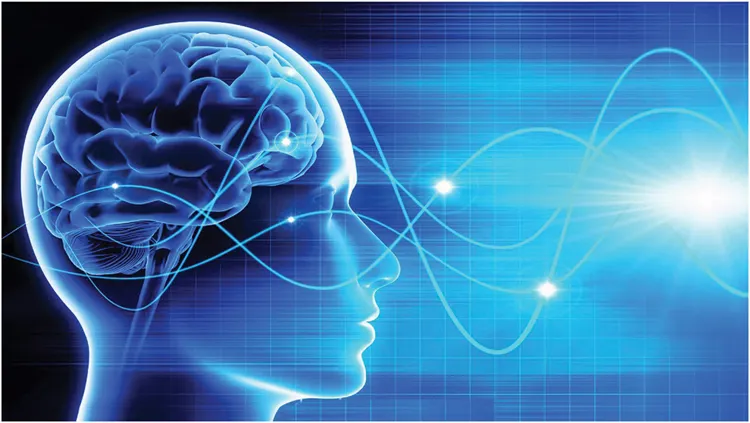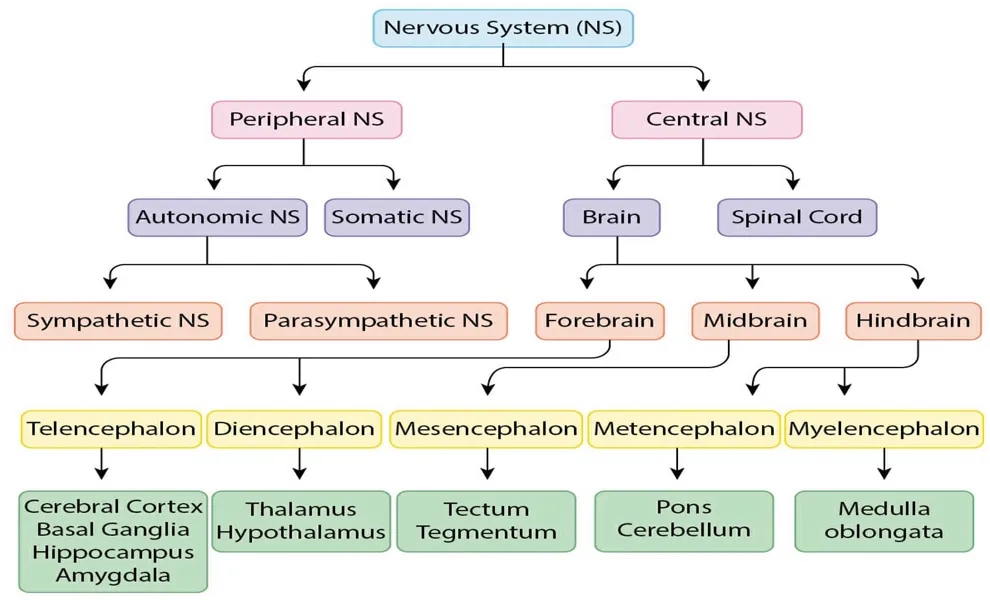
eBook - ePub
Environmental Pollution and the Brain
Sultan Ayoub Meo
This is a test
Buch teilen
- 324 Seiten
- English
- ePUB (handyfreundlich)
- Über iOS und Android verfügbar
eBook - ePub
Environmental Pollution and the Brain
Sultan Ayoub Meo
Angaben zum Buch
Buchvorschau
Inhaltsverzeichnis
Quellenangaben
Über dieses Buch
Environmental pollution is an emerging global public health problem of both developing and developed nations. Such pollution is a major risk factor for many illnesses, including nervous system disorders. This book combines the highlights the effects of environmental pollution on brain biology. It will be a thorough overview of the pathophysiological and oxidative stress mechanisms and how environmental pollution affects the brain biology. The author discusses environmental pollution and brain development, memory, autism, hearing and vision loss and brain cancer. Several chapters address controversial topics such as the effect of Electromagnetic Field Radiation (RF-EMFR).
Häufig gestellte Fragen
Wie kann ich mein Abo kündigen?
Gehe einfach zum Kontobereich in den Einstellungen und klicke auf „Abo kündigen“ – ganz einfach. Nachdem du gekündigt hast, bleibt deine Mitgliedschaft für den verbleibenden Abozeitraum, den du bereits bezahlt hast, aktiv. Mehr Informationen hier.
(Wie) Kann ich Bücher herunterladen?
Derzeit stehen all unsere auf Mobilgeräte reagierenden ePub-Bücher zum Download über die App zur Verfügung. Die meisten unserer PDFs stehen ebenfalls zum Download bereit; wir arbeiten daran, auch die übrigen PDFs zum Download anzubieten, bei denen dies aktuell noch nicht möglich ist. Weitere Informationen hier.
Welcher Unterschied besteht bei den Preisen zwischen den Aboplänen?
Mit beiden Aboplänen erhältst du vollen Zugang zur Bibliothek und allen Funktionen von Perlego. Die einzigen Unterschiede bestehen im Preis und dem Abozeitraum: Mit dem Jahresabo sparst du auf 12 Monate gerechnet im Vergleich zum Monatsabo rund 30 %.
Was ist Perlego?
Wir sind ein Online-Abodienst für Lehrbücher, bei dem du für weniger als den Preis eines einzelnen Buches pro Monat Zugang zu einer ganzen Online-Bibliothek erhältst. Mit über 1 Million Büchern zu über 1.000 verschiedenen Themen haben wir bestimmt alles, was du brauchst! Weitere Informationen hier.
Unterstützt Perlego Text-zu-Sprache?
Achte auf das Symbol zum Vorlesen in deinem nächsten Buch, um zu sehen, ob du es dir auch anhören kannst. Bei diesem Tool wird dir Text laut vorgelesen, wobei der Text beim Vorlesen auch grafisch hervorgehoben wird. Du kannst das Vorlesen jederzeit anhalten, beschleunigen und verlangsamen. Weitere Informationen hier.
Ist Environmental Pollution and the Brain als Online-PDF/ePub verfügbar?
Ja, du hast Zugang zu Environmental Pollution and the Brain von Sultan Ayoub Meo im PDF- und/oder ePub-Format sowie zu anderen beliebten Büchern aus Medicina & Neurología. Aus unserem Katalog stehen dir über 1 Million Bücher zur Verfügung.
Information
Chapter
01Biology of the Brain
DOI: 10.1201/9781003212461-1

1.1 Introduction
Being the main organ on which all other body systems depend, the human brain is a highly complex organ. It comprises 85–100 billion neurons, of which approximately 20 billion are found in the cerebral cortex [1, 2]. Each cortical neuron has, on average, 7,000 synaptic connections, linking different neurons and resulting in an arrangement of 0.15 quadrillion synapses and more than 150,000 km of myelinated nerve fibers [3]. The complexity of the brain is due to its biological, neuronal, hormonal, mechanical, and electrical connectivity with each cell (75–100 trillion cells) in the human body. Neuronal connections provide and control the entire physiological and biochemical actions, reactions, thoughts, feelings, memory, and experiences by coding and processing information [4].
The nervous system is the chief controlling and coordinating system that regulates all body functions and systems. It has two main divisions: “(i) the central nervous system (CNS), which consists of two parts, the brain and spinal cord, and (ii) the peripheral nervous system (PNS), which consists of cranial and spinal nerves.” The brain’s sensory part collects the signal information from the body, that is, the receptors, whereas the motor part controls the body’s responses, that is, the effectors. The higher cognitive functions of the body, including voluntary and involuntary actions, are robust and controlled by various brain centers [5–7].
Subsequently, the narrative of the neurons, receptors, and synapses is the first step toward a solicitous understanding of the basic biological and physiological principles of the CNS and PNS (Figure 1.1).
1.2 Neurons
Neurons, also known as nerve cells or nerve fibers, are the principal excitable cells of the nervous system, playing a major role in receiving, processing, and transmitting the information. Neurons are the basic biological units of the brain, spinal cord, and PNS. Being the primary functional and structural unit of the nervous system, they are supported by neuroglia and astrocytes. They are the principal elements of perception, memory, thought, and actions and the units of consciousness [8]. The two main classes of cells that make up nervous tissue are neurons and neuroglia.

Figure 1.1 Nervous system: central and peripheral nervous system.
The neurons consist of three parts: the axon, dendrite, and cell body called soma (Figure 1.2)—and are classified into unipolar, bipolar, and multipolar neurons. On the basis of the anatomical features, neurons are also classified into two types: Golgi type 1 neuron with a long axon and Golgi type 2 neuron with a short axon. However, physiologically, “neurons are classified into three types: sensory neurons, interneurons, and motor neurons.” Neurons vary in number, size, and shape. The number of neurons in the body ranges from 85 billion to 100 billion, which comprise approximately 10% of the entire brain structure [1, 2].
1.2.1 Cell Body (Soma)
The cell body (soma) of a neuron houses the nucleus, nucleolus, and other minute organelles that perform essential chemical, biological, and metabolic functions and sustain cell survival. The size of a neuronal cell body is approximately 0.005–0.1 mm. The essential minute organelles found in the neuronal cytoplasm include mitochondria, Golgi apparatus, endoplasmic reticulum, ribosomes, lysosomes, endosomes, peroxisomes, centrioles, microtubules, and microfilaments. These organelles are also found in other body cells (Table 1.1; Figure 1.3). The organelles found in a nerve cell are fundamental for the expression of genetic information that controls the synthesis of cellular proteins, energy synthesis, growth, and replacement [9, 10].
Recent studies have revealed that proteins are synthesized in the dendrites, but axons and axon terminals could not synthesize these proteins, as they do not contain ribosomes. Through the mechanism of “anterograde transport,” tiny substances are transported via microtubules along the entire length of the axon to the terminals, where they insert into the plasma membrane and other organelles and material are degraded by lysosomes [10].

Figure 1.2 Neuron.
1.2.2 Dendrites
The receiving end of the neuron or input part consists of tree-like branches of the neuronal cell body (soma), known as dendrites. The word “dendrite” was coined by William His, a Swiss anatomist, in 1889, derived from the Greek words “dendr” or “dendro,” meaning tree. The dendrite spines are small outgrowths, which further increase the receptive surface area of a neuron. They control the number, dispersal, and incorporation of inputs into a neuron and regulate the generation of the various dendrite branching patterns with distinct features of assorted types of neurons [11]. To maintain the typical characteristics of the neurons and perform function appropriately, the neurons must connect through dendrites to receive information [11]. The normal morphology of dendrites provides a physiological promise with vital functional implications in determining the types, nature, severity of signals, and their integration received by neurons. The receptor relations, signaling pathways, and cytoskeletal elements have been recognized as significant elements that contribute significantly to the organization of dendrites of different neurons [12].
The morphological and physiological characteristics of dendrites vary from those of axons [13]. Dendrites have specialized structures, such as spines, which act as the primary excitatory synaptic sites, and these structures differentiate dendrites from axons. Axons and dendrites contain additional minute organelles, including the Golgi body [14–15]. The arrangements of several cytoskeletal structures influence the process in which minute organelles and molecules are transported along the axons and dendrites [12].
1.2.3 Axons
Almost all neurons consist of a single axon, the diameter of which varies from a micrometer to a meter, in certain nerves of the human brain. Axons are usually less branched, straighter, and smoother in appearance than dendrites and have microtubules, neurofilaments, and scattered mitochondria. They play a major role in the conduction of an electrochemical impulse, called an action potential, propagating outward or away from the cell body toward the axon terminus [16].
| Organelles of Neuron | Structural Characteristics | Functional Characteristics |
|---|---|---|
| Plasma cell membrane | Similar to other cells, neuronal cells are also surrounded by a plasma cell membrane made of lipids bilayer and proteins. It is composed of an inner and an outer layer. The lipid layer is made up of two rows of phospholipid molecules | The neuronal plasma membrane has a semipermeable membrane. It serves as a barrier to encompass the cytoplasm and organelles, has a selective role for the diffusion of certain ions and substances, and restricts others. It stores nutritional and eliminates injurious substances, and catalyzes biochemical reactions. It generates an electrical potential and conduct nerve impulse |
| Nucleus | Large, rounded with one clear nucleolus, widely scattered in the neuronal cell body (soma) | It contains genetic material; DNA synthesizes RNA from DNA and transports i... |